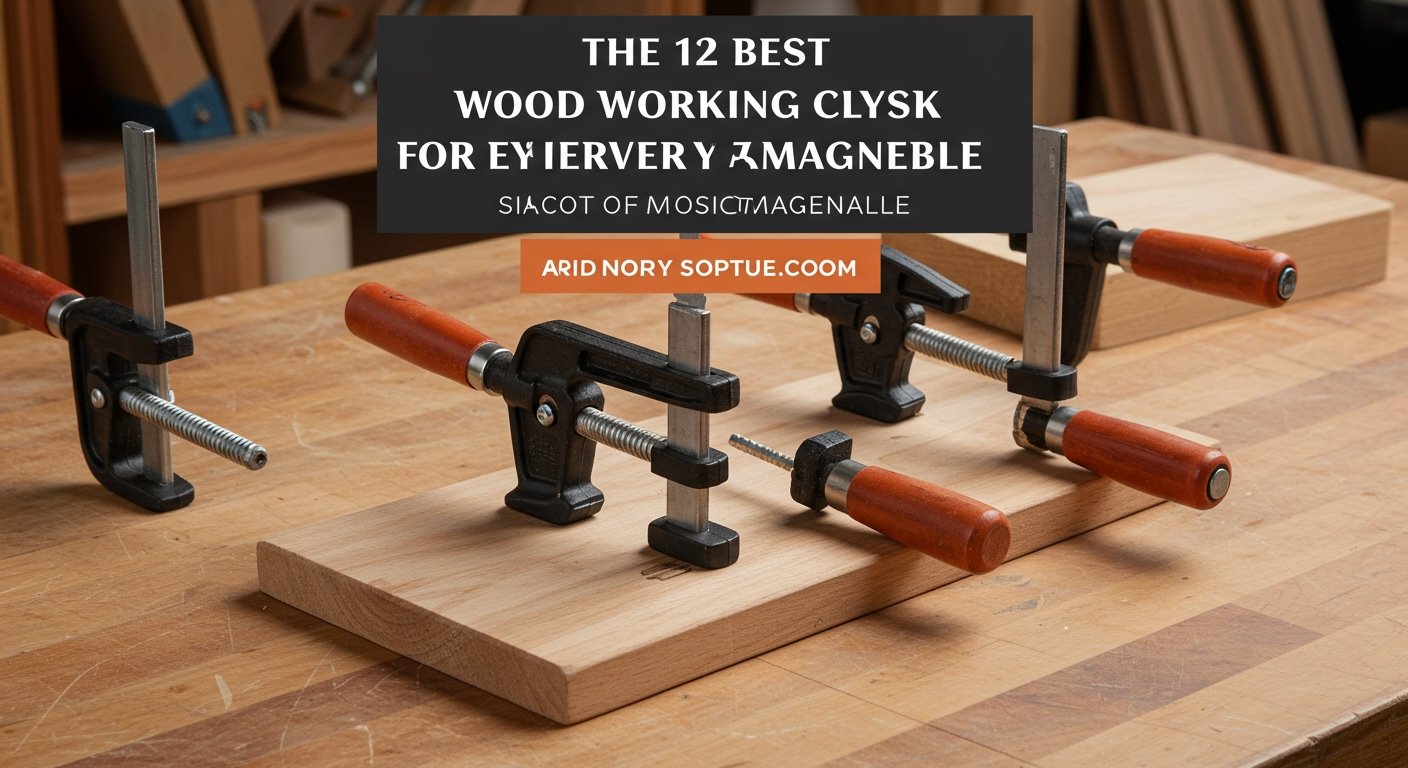Welcome to the essential guide to one of the most fundamental tools in any woodworker’s arsenal: the woodworking clamp! Whether you’re just starting your journey into the craft or you’re a seasoned pro, understanding the different types of clamps and how to use them effectively is crucial for achieving clean, strong, and professional results. From holding pieces securely during gluing to assisting with assembly, the right clamp makes all the difference.
The woodworking industry is thriving, with the global woodworking clamp market valued at an impressive $366 million in 2025 and projected to grow at a Compound Annual Growth Rate (CAGR) of 4.1% from 2025 to 2033. This growth is fueled, in part, by a booming interest in home improvement, with spending in the U.S. alone reaching USD 420 billion in 2023. The broader wood project clamp market was valued at USD 976.97 million in 2023 and is projected to reach USD 1,276.68 million by 2031, growing at a CAGR of 3.9% from 2024 to 2031. This shows a clear demand for reliable clamping solutions as more people undertake woodworking projects. To help you navigate this vast market, we’ve compiled a list of the 12 best woodworking clamps that will cover virtually every project imaginable.
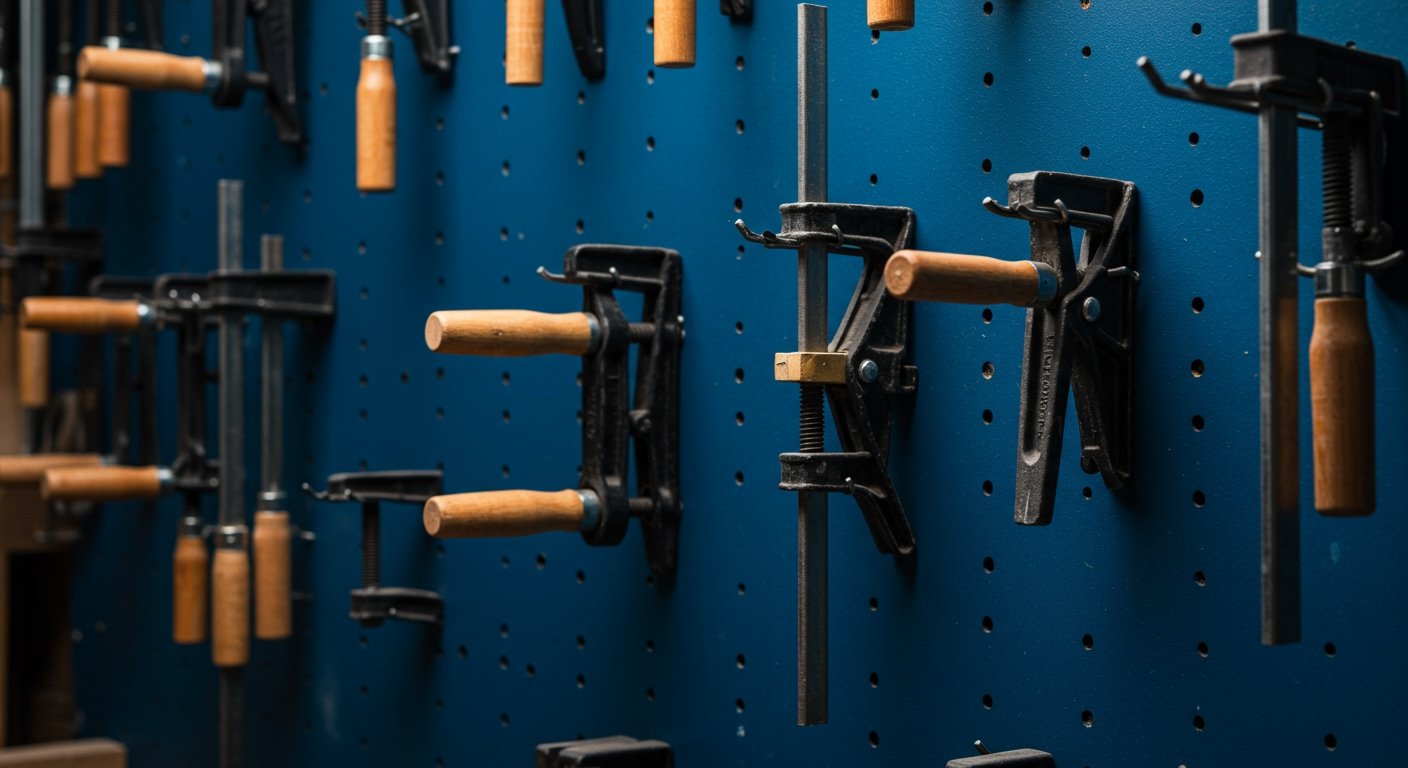
Why are Woodworking Clamps Essential?
You might wonder, “What is the purpose of using clamps in woodworking projects?” Simply put, clamps act as an extra set of hands – and often, many extra sets of hands! Their primary purpose is to hold workpieces firmly in place, preventing movement while glue dries, fasteners are installed, or during precision cutting and assembly. Without proper clamping, joints can shift, leading to weak bonds, misaligned components, and ultimately, a flawed finished product. They ensure that the pressure applied during gluing is even and consistent, which is key to a strong joint. For more general information on the versatile uses of clamps in various fields, you can refer to this Wikipedia article on clamps). [1]
Clamps are considered essential for woodworking projects because they provide:
- Stability: Holding pieces steady during critical operations like drilling or routing.
- Pressure: Applying consistent pressure for strong glue-ups, which is vital for long-lasting projects.
- Alignment: Keeping components perfectly aligned during assembly.
- Safety: Securing workpieces to prevent them from moving unexpectedly, enhancing safety in the workshop.
Understanding the Diverse Types of Woodworking Clamps
There’s a vast array of types of woodworking clamps, each designed for specific tasks. Building a comprehensive woodworking clamp set means having a variety to tackle any challenge. Here are the 12 best woodworking clamps you should consider for your workshop:
1. F-Clamps (Bar Clamps)
The classic woodworking F clamp is cited as the most common and widely utilized type of clamping tool, used by almost every woodworker. [5] Named for their distinct ‘F’ shape, these versatile clamps feature a fixed jaw at one end of a bar and a movable jaw that slides along the bar, tightened with a screw mechanism. They are excellent for general-purpose clamping, holding pieces for gluing, and assembly. F-clamps are available in various lengths, making them adaptable for both small and medium-sized projects.
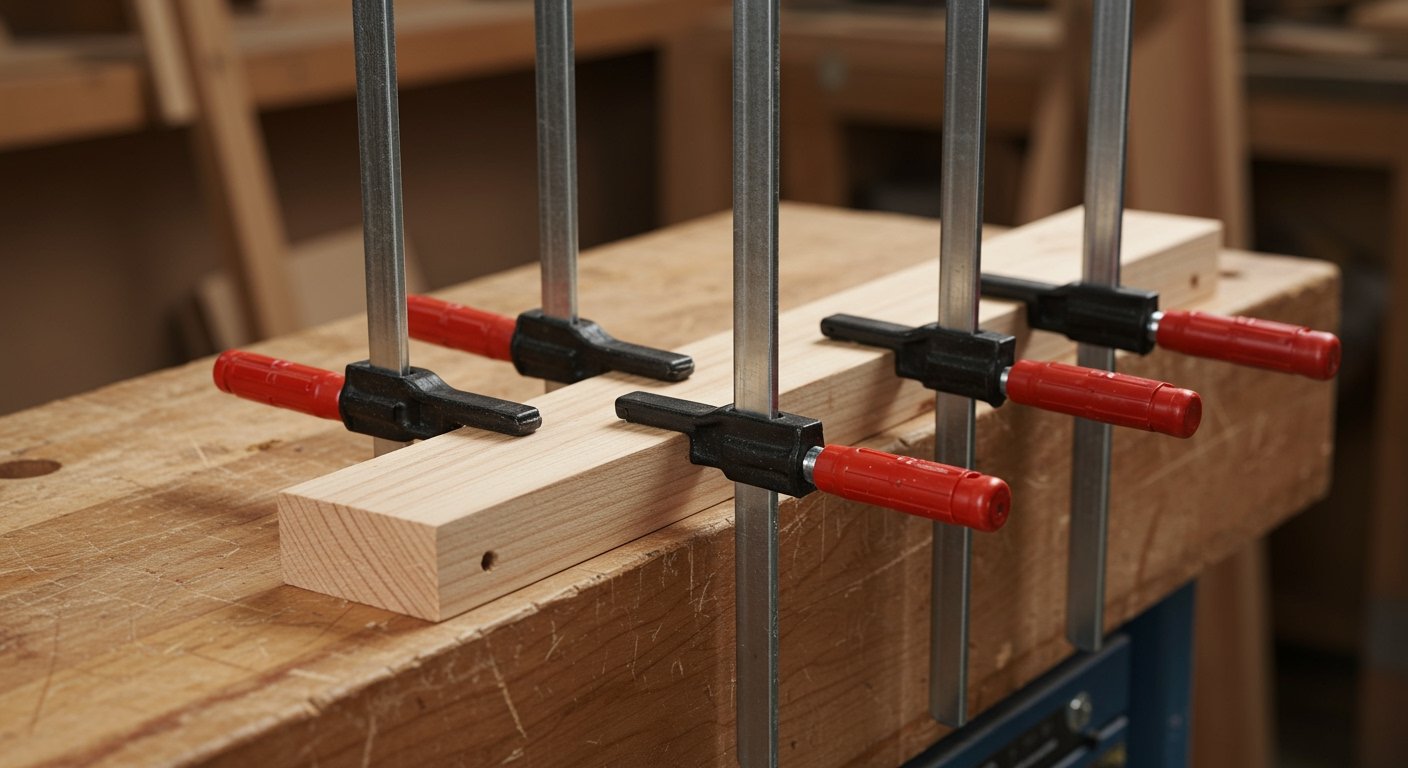
2. Parallel Jaw Clamps (Cabinet Clamps Woodworking)
Parallel jaw bar clamps are considered one of the most popular and versatile types of clamps, primarily used for projects requiring flatness, such as panels and doors. [5] These clamps, often referred to as cabinet clamps woodworking, are prized for their ability to maintain perfectly parallel jaws, even under immense pressure. This ensures even clamping force across wide surfaces, making them the best clamps for gluing panels, tabletops, and cabinet carcases without introducing bowing. Many parallel clamps woodworking models also feature large, non-marring jaws, protecting your delicate work.
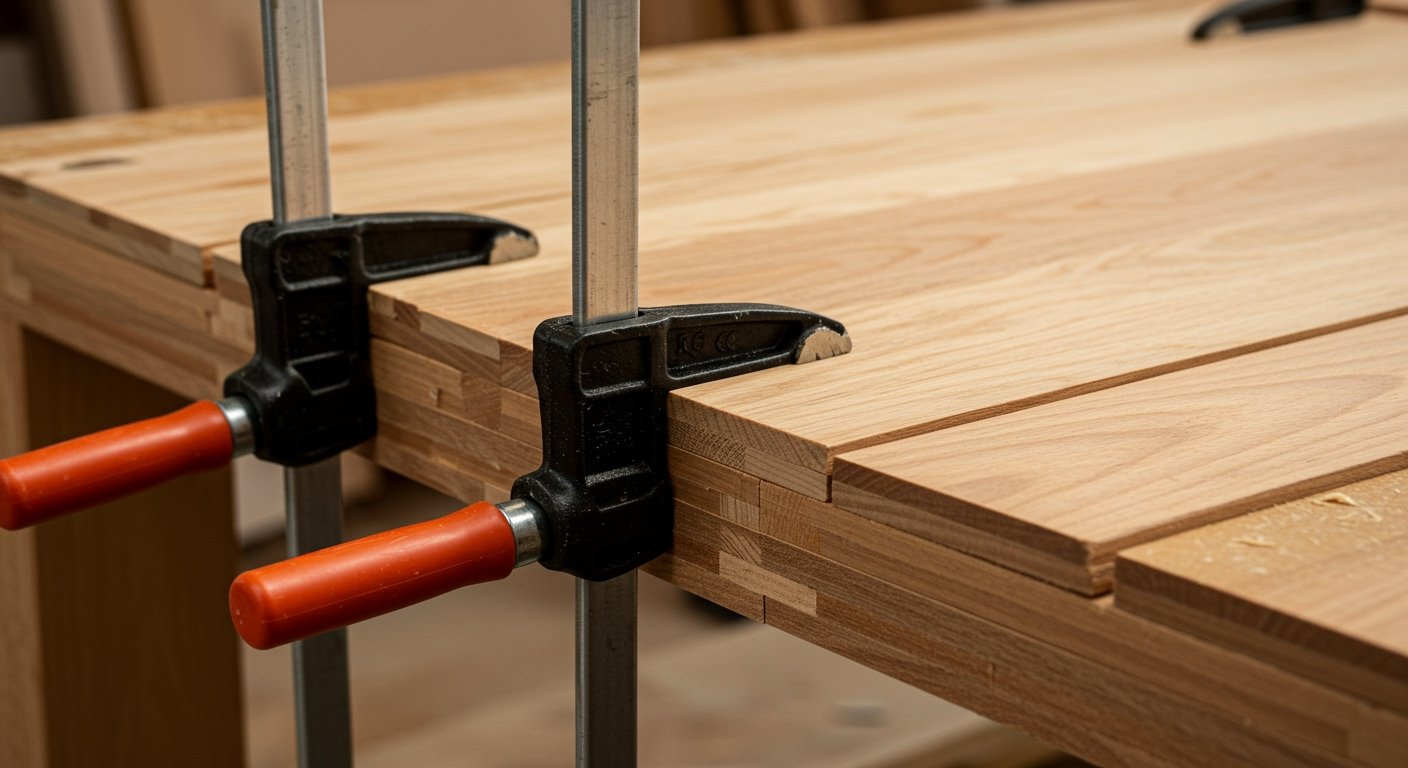
Are parallel clamps or F clamps better? Both are essential, but for different tasks. F clamps (bar clamps) are highly versatile for general clamping and quick setups, while parallel clamps excel at delicate glue-ups where flatness and even pressure across a broad surface are paramount. If your project demands absolute flatness, parallel clamps are superior. For quick, strong holds on smaller or less critical surfaces, F-clamps are often preferred.
3. C-Clamps (G-Clamps)
C-clamps, or G-clamps, are named for their ‘C’ or ‘G’ shape. They are very common and provide strong, concentrated clamping force. While often used in metalworking, they are also useful in woodworking for holding smaller pieces or securing jigs to a workbench. They offer a deep throat for reaching into workpieces.
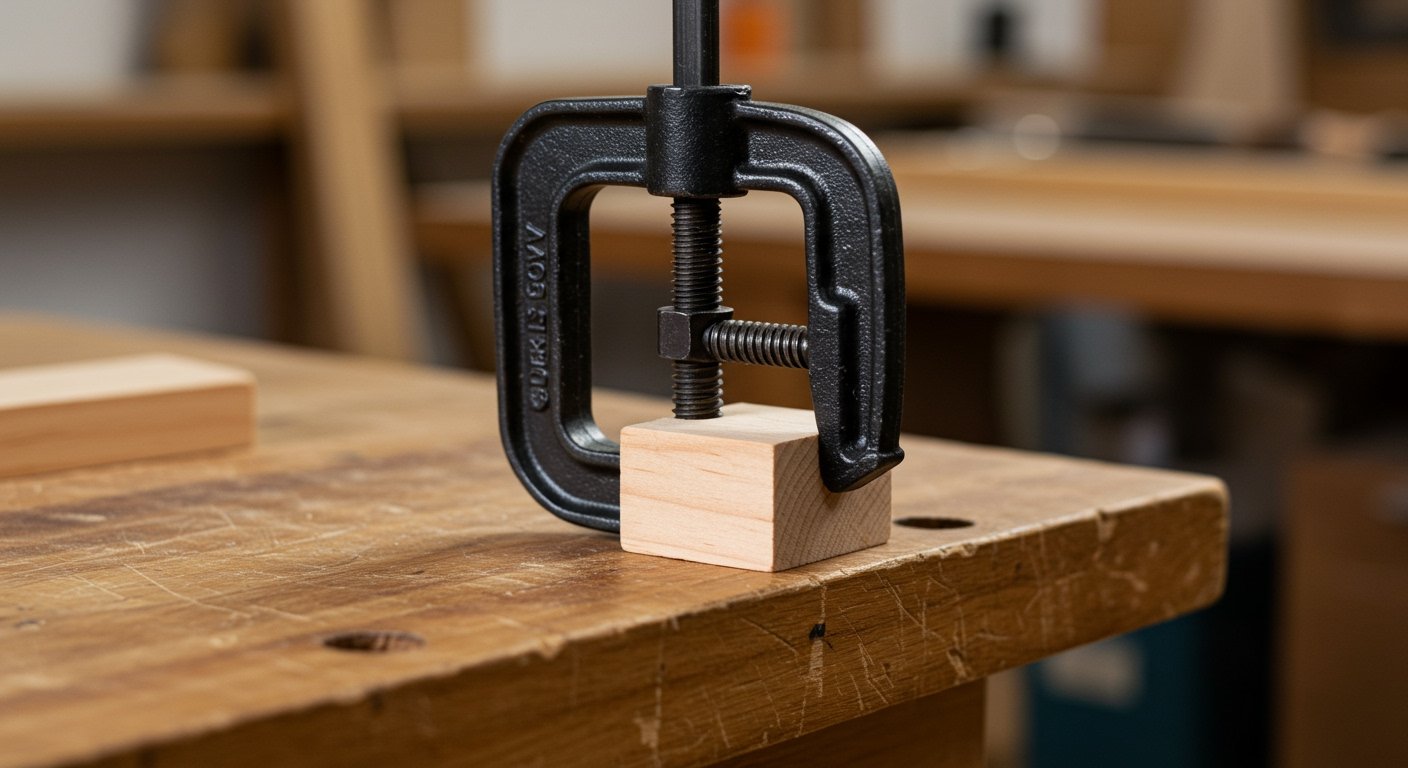
4. Pipe Clamps Woodworking
Pipe clamps woodworking are incredibly cost-effective and versatile, especially for projects requiring long reach. They consist of a clamping mechanism that attaches to standard plumbing pipes (often 1/2-inch or 3/4-inch diameter). The length of your clamp is limited only by the length of your pipe, making them excellent for large assemblies like tabletops or doors. They provide strong, adjustable pressure.
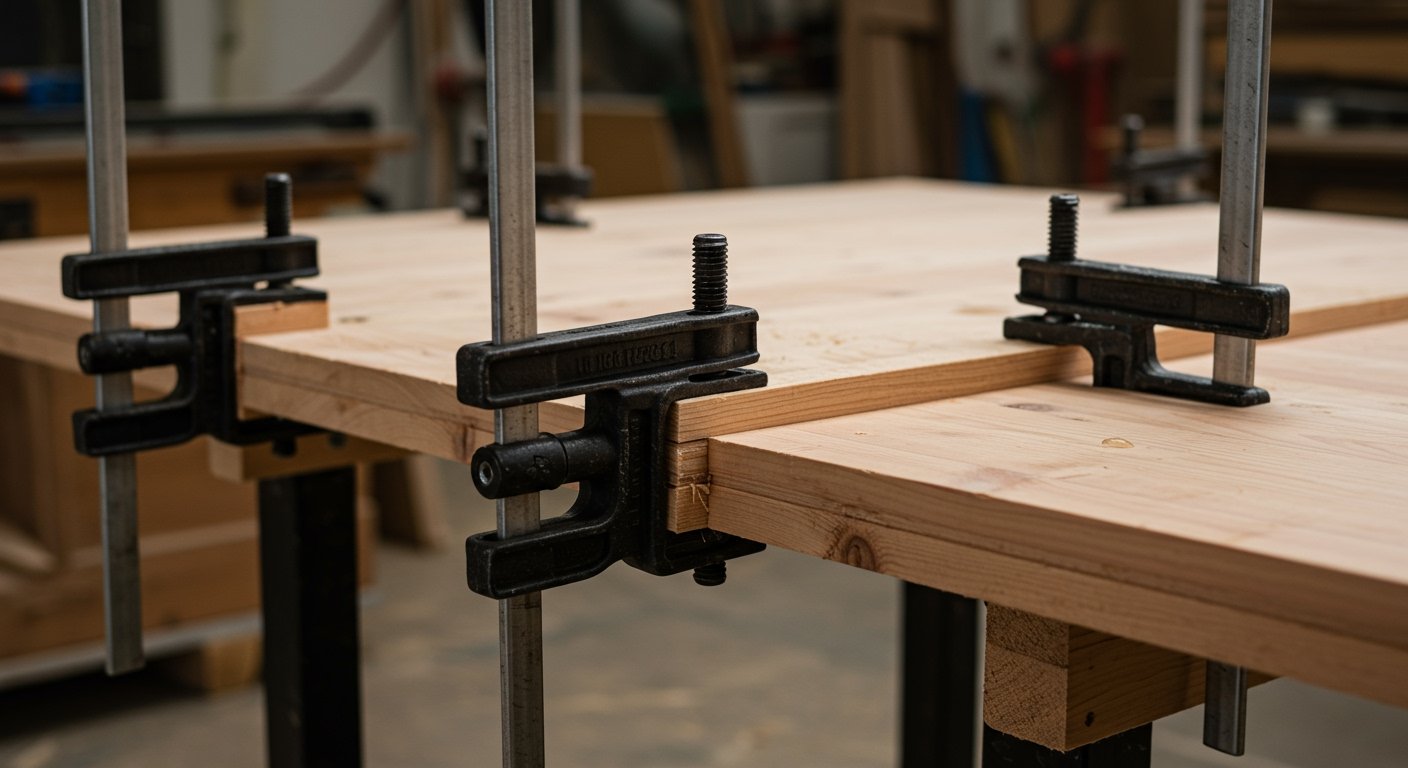
5. Quick-Grip Clamps (One Hand Clamps Woodworking)
Also known as one hand clamps woodworking or trigger clamps, quick-grip clamps review well for their convenience. They allow for rapid, single-handed clamping, which is invaluable when you need to hold a piece in place while positioning another. While they don’t offer the same clamping force as F-clamps or parallel clamps, they are perfect for lighter tasks, temporary holds, and when speed is of the essence. A common question is, “Should I get woodworking pipe clamps or trigger clamps?” Pipe clamps offer much greater clamping force and unlimited length for large projects, while trigger clamps are unbeatable for quick, one-handed operation on smaller or temporary tasks. It really depends on the scale and demands of your project.
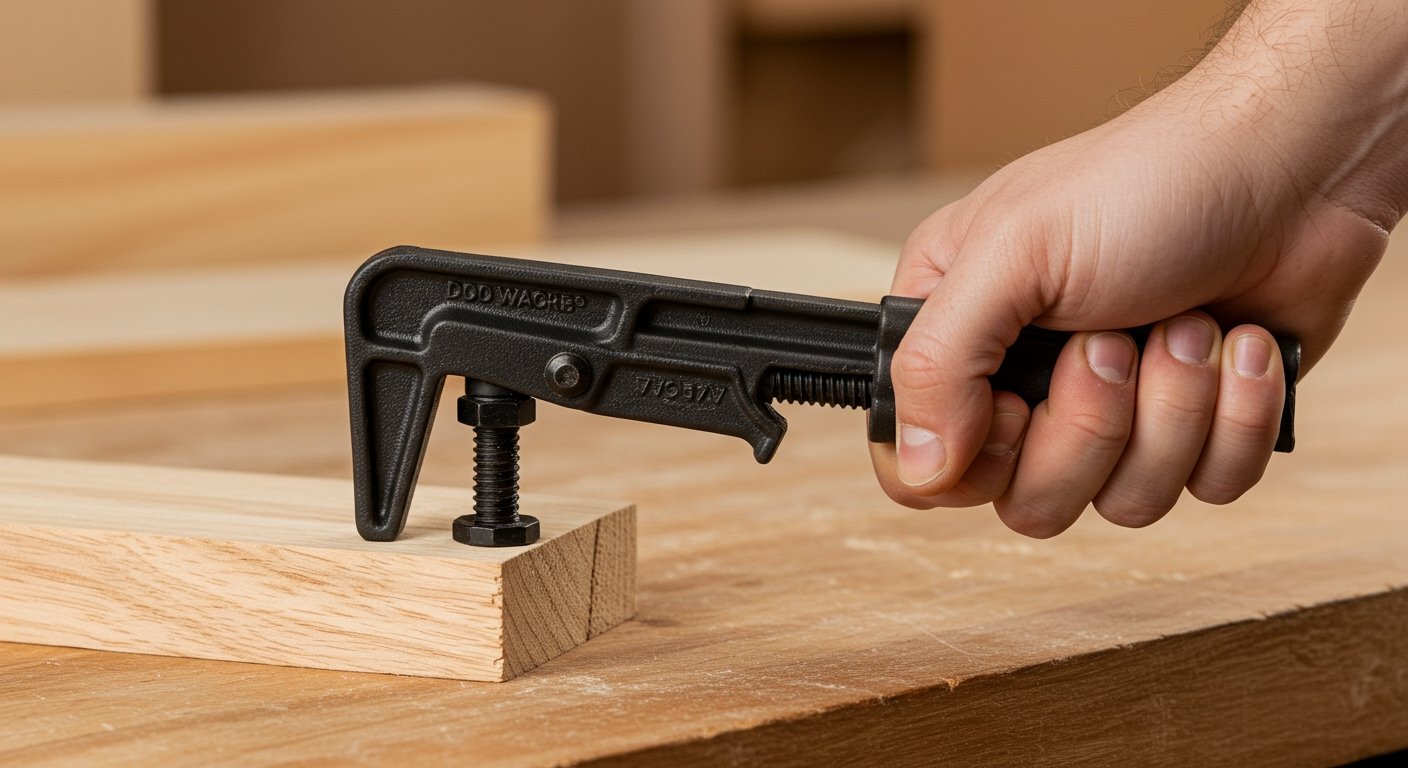
6. Handscrews
Handscrews are characterized by their wooden jaws and two independent threaded rods, allowing them to clamp at angles or conform to irregular shapes. They offer incredible gripping power without marring the workpiece, making them ideal for delicate or finished surfaces. Their deep throat capacity is also a significant advantage.
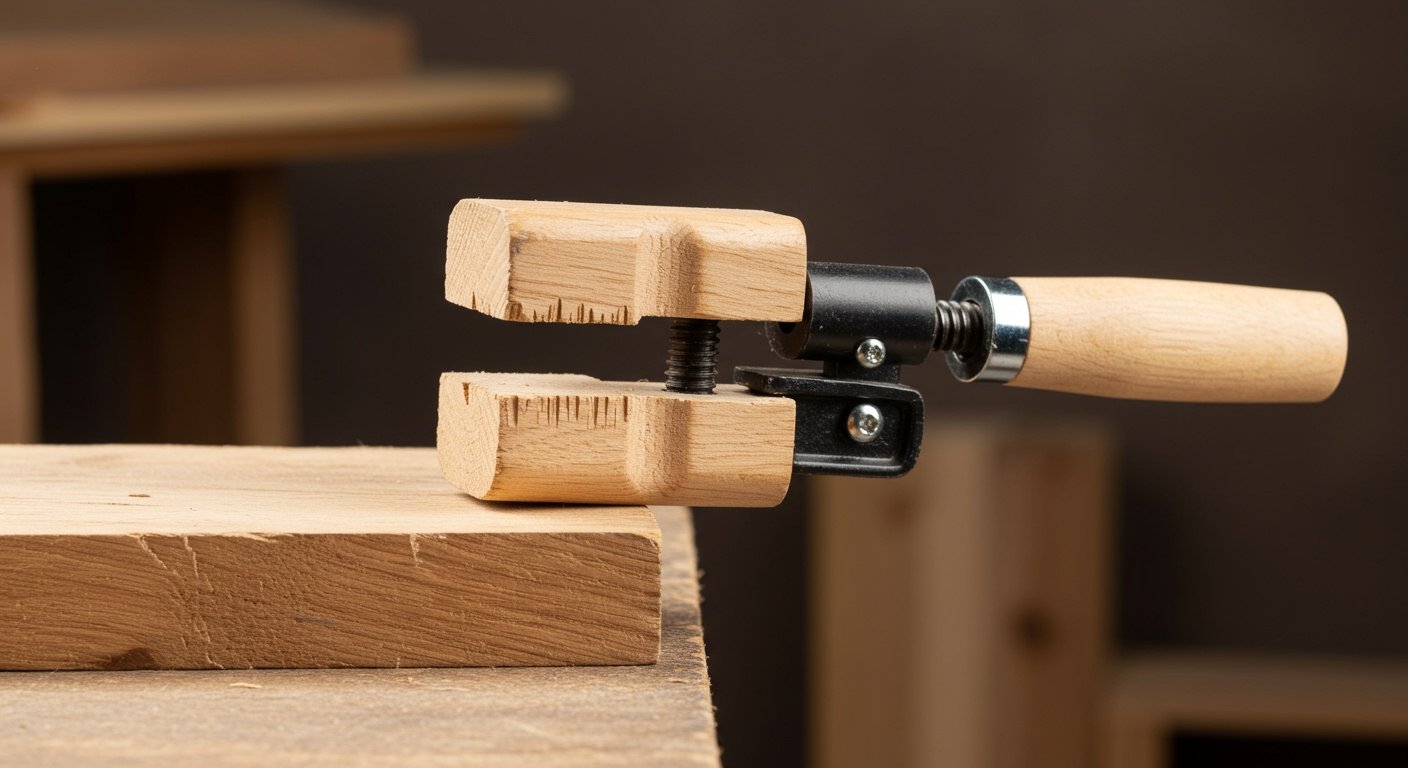
7. Spring Clamps (Small Woodworking Clamps)
These small woodworking clamps resemble giant clothespins. Spring clamps provide instant, light-duty clamping pressure and are perfect for holding small pieces, temporarily securing fabrics or veneers, or acting as an extra hand while glue sets on intricate work. They are incredibly convenient for quick tasks where heavy pressure isn’t required.
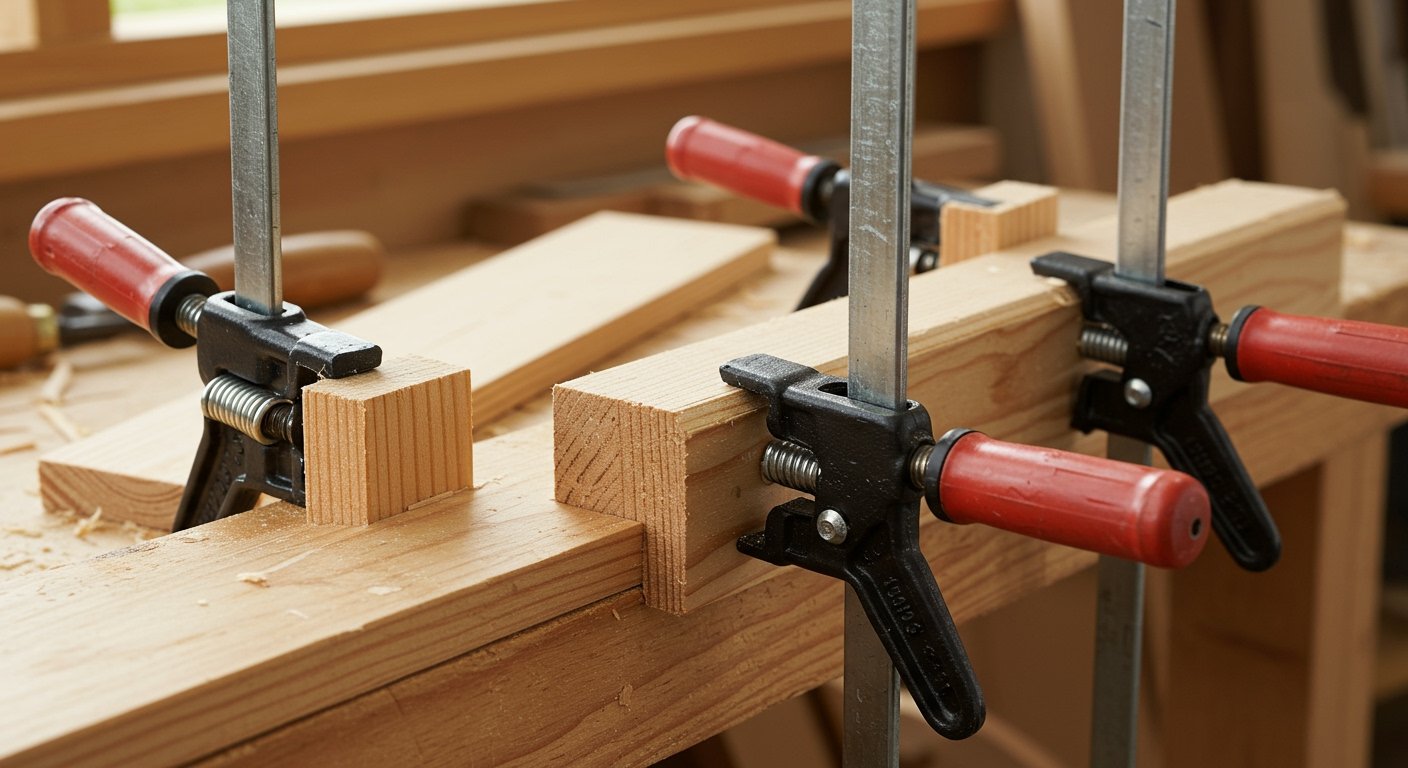
8. Band Clamps (Web Clamps)
Band clamps, or web clamps, use a flexible strap to apply pressure around irregular or multi-sided objects. They are perfect for clamping picture frames, octagonal tables, or any project where traditional clamps can’t get a good grip around the perimeter. The strap ensures even pressure on all sides.
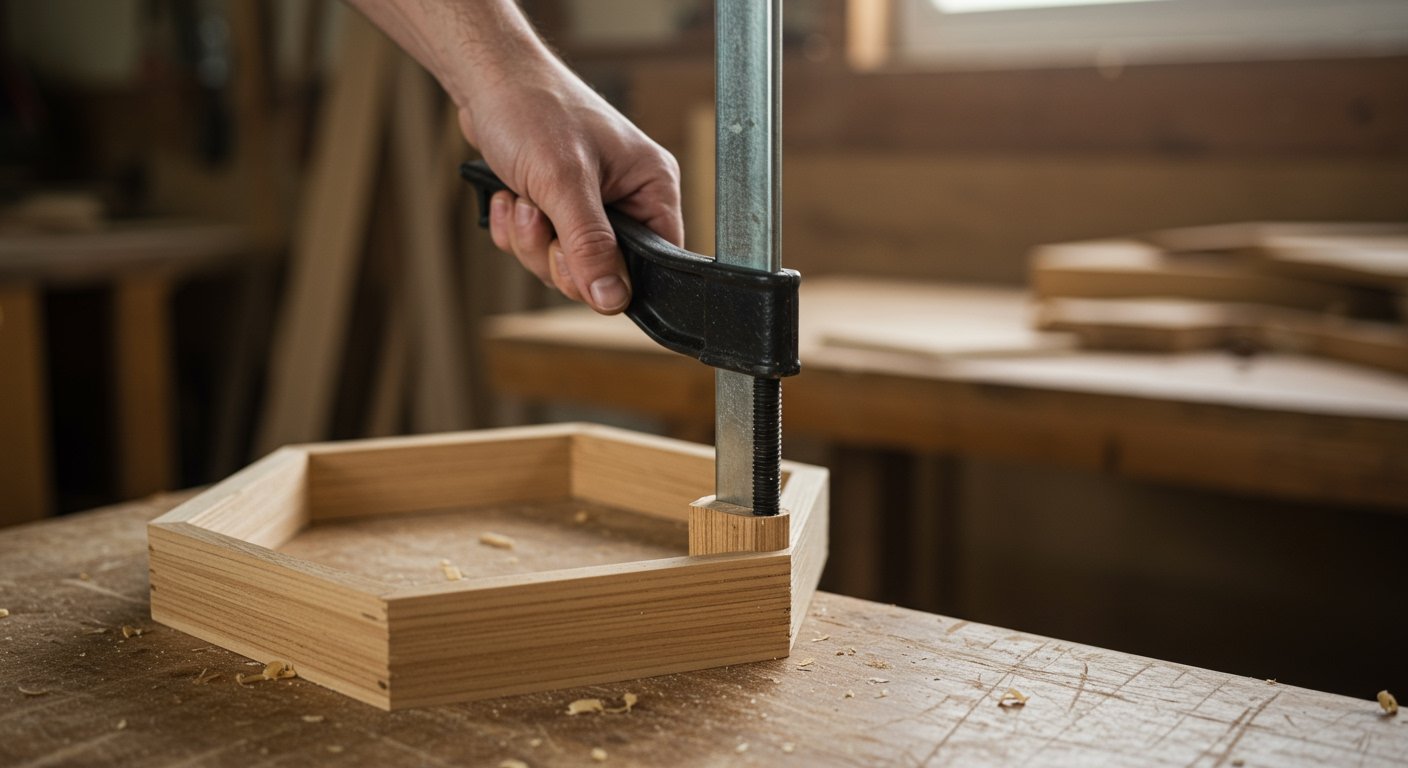
9. Edge Clamps
Edge clamping solutions are specifically designed to apply pressure to the edge of a board, often for attaching banding or edge trim. They typically feature two screws or a unique jaw design to provide pressure both from the top and the side, ensuring the edge material is held flush and securely.
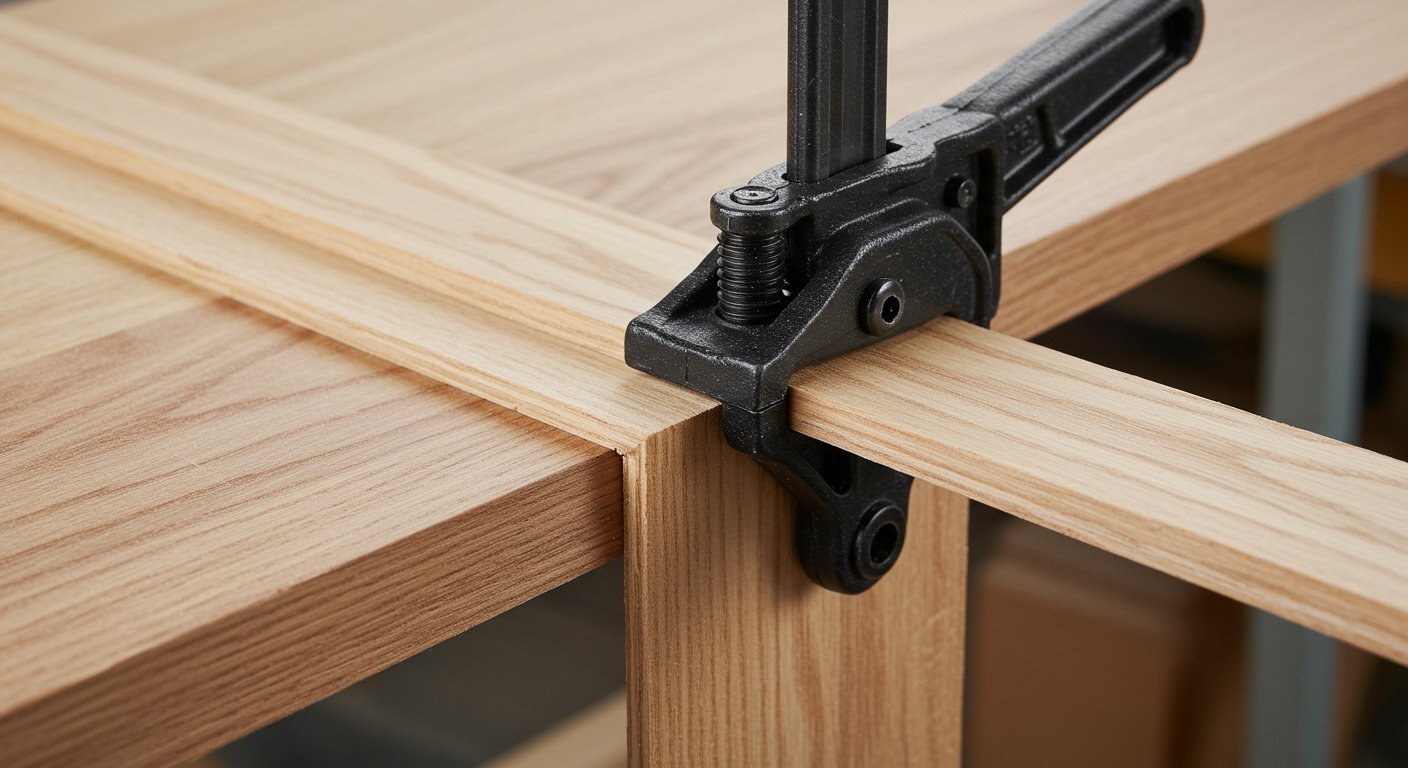
10. Corner Clamps
Corner clamps are specialized for holding two pieces of wood at a perfect 90-degree angle, making them indispensable for frame construction, box building, and cabinet corners. They ensure accuracy and stability during assembly, especially crucial for glue-ups.
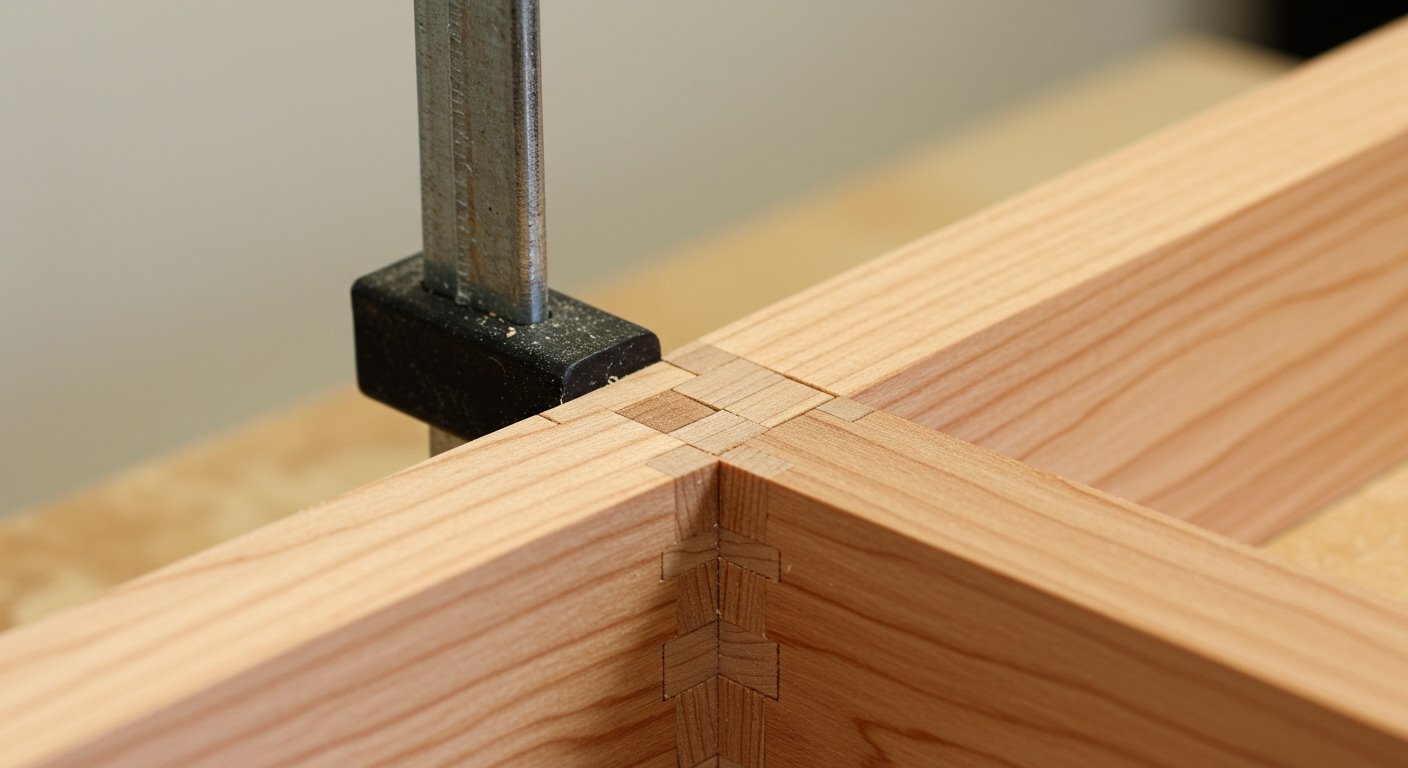
11. Miter Clamps
Similar to corner clamps, miter clamps are designed to hold mitered joints (typically 45-degree angles forming a 90-degree corner) securely while glue dries. They often use spring action or a screw mechanism to pull the joint tight, ensuring a seamless connection.
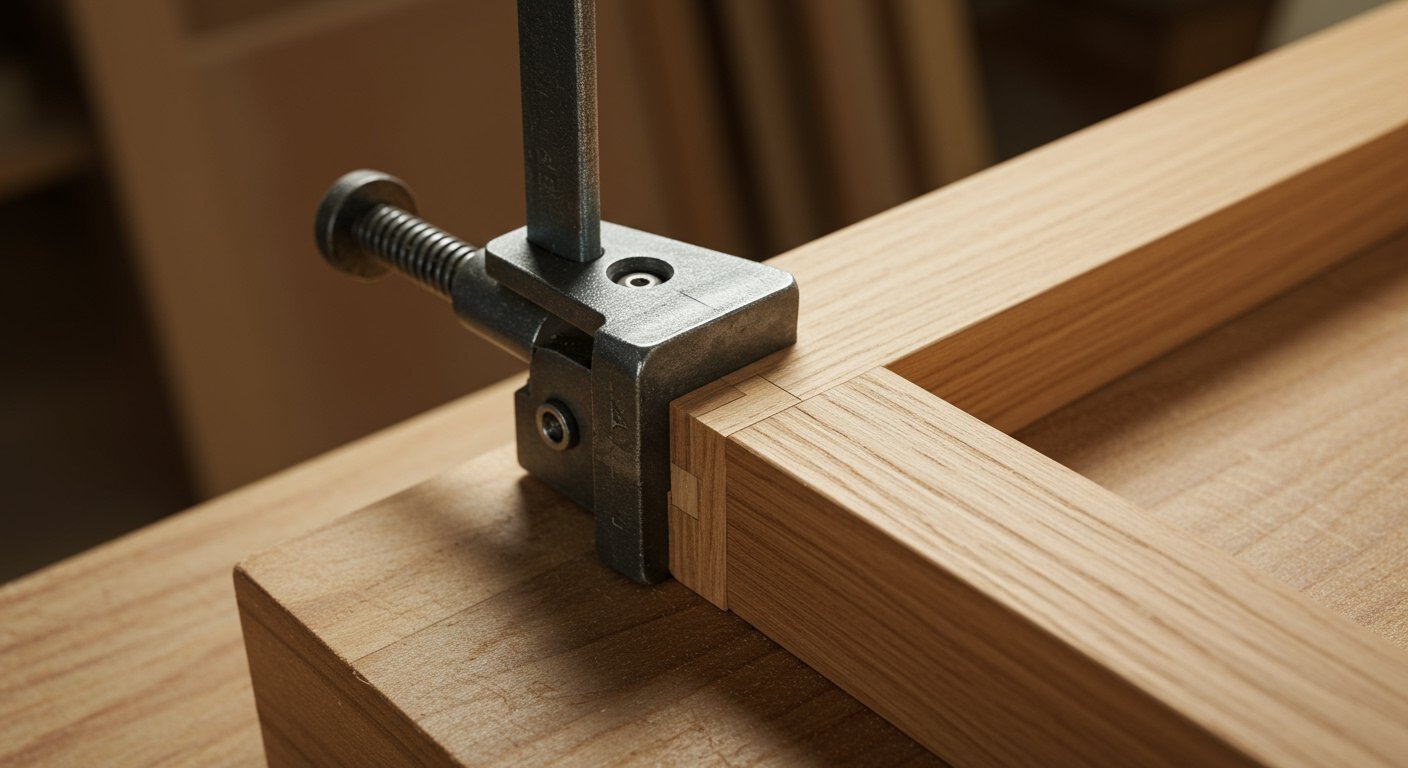
12. Holdfasts / Bench Clamps
Holdfasts are traditional bench clamps that fit into holes in a workbench. With a tap of a mallet, they exert strong downward pressure, securing workpieces flat to the benchtop. Modern bench clamps operate similarly but often use a screw mechanism for tightening. They are incredibly useful for holding work during planing, chiseling, or routing.
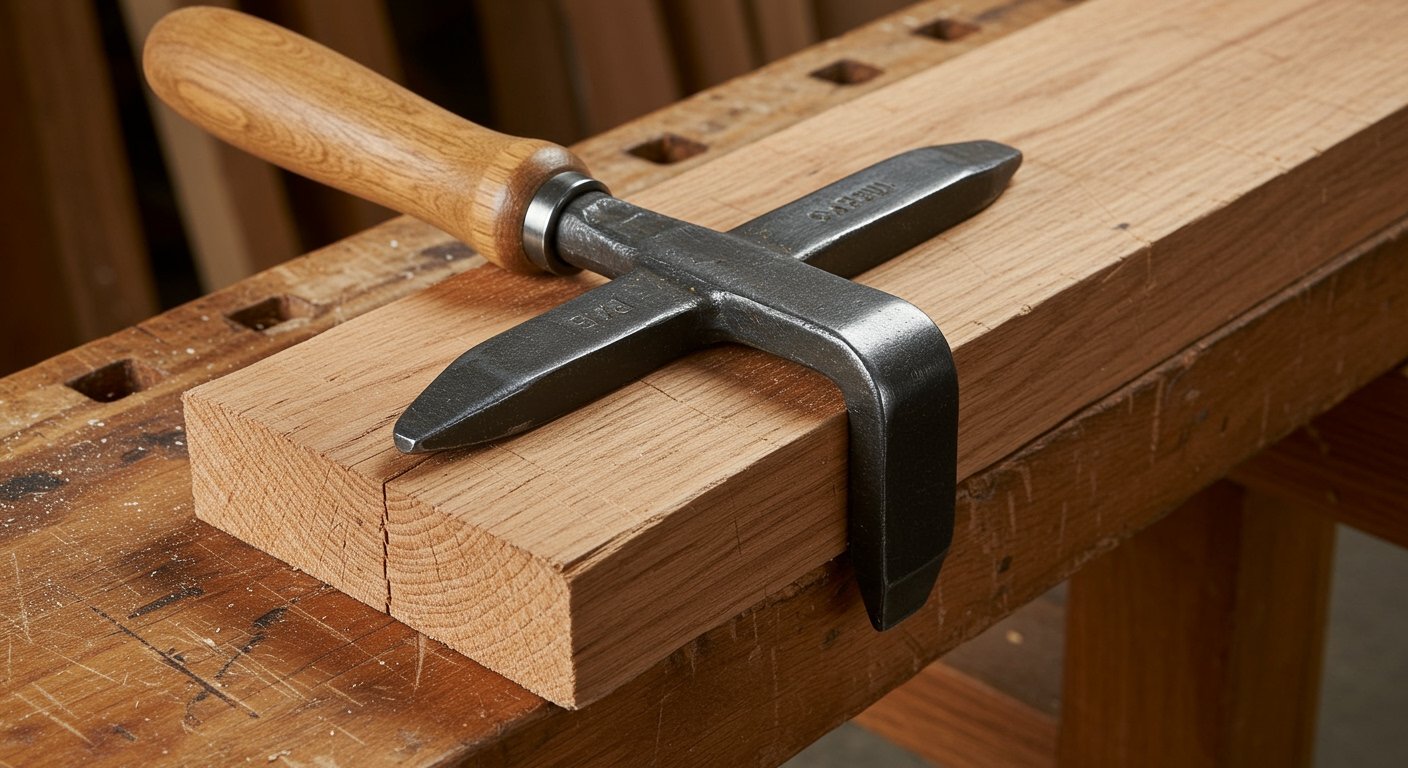
Must-Have Woodworking Clamps for Beginners
For beginners, it can be overwhelming to decide which clamps to buy first. So, “What are the must-have woodworking clamps for beginners?” A good starting point for a versatile woodworking clamp set includes:
1. A few F-Clamps (Bar Clamps): For general gluing and assembly tasks.
2. A couple of Quick-Grip/One-Handed Clamps: For quick holds and when you need a free hand.
3. Two or more Pipe Clamps: Especially if you anticipate gluing larger panels, as they are economical and expandable.
4. A handful of Spring Clamps: For small, light-duty, and temporary holds.
This mix will allow you to tackle a wide range of common woodworking projects. As you grow in your skills and take on more complex projects, you can gradually expand your collection. Don’t forget, having the right hand tools is just as important as having the right power tools. Check out our guide on The Top 7 Power Tools to Transform Your Workshop for more essential tools.
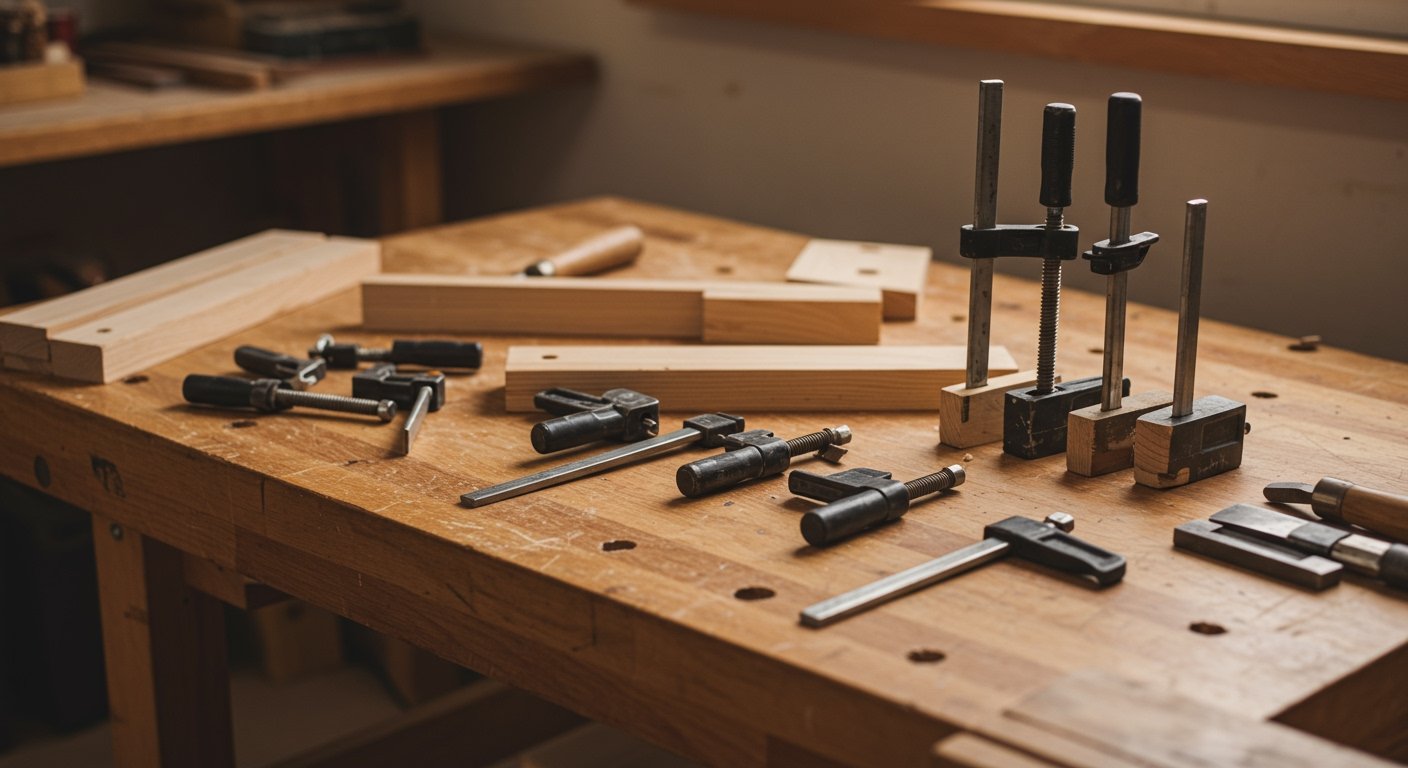
Mastering Woodworking Clamping Techniques and Storage
Having the best woodworking clamps is only half the battle; knowing how to use woodworking clamps effectively is equally important. Here are some key woodworking clamping techniques:
- Use Cauls: These are sacrificial pieces of wood placed between the clamp jaws and your workpiece. They help distribute pressure evenly and prevent unsightly clamp marks, especially on softer woods or finished surfaces. [10]
- Alternate Clamps: When gluing wide panels, alternate clamps above and below the workpiece to prevent bowing. This balances the pressure and keeps the panel flat.
- Even Pressure: Don’t overtighten! Apply just enough pressure to close the joint and create a small amount of glue squeeze-out. Too much pressure can starve the joint of glue or damage the wood.
- Clean Up Glue: Wipe away excess glue squeeze-out while it’s still wet to save time and effort later.
- Protect Your Clamps: Use wax paper between clamps and your project to prevent glue from sticking to them. [10]
Effective woodworking clamp storage is also crucial. Clamps can take up a lot of space. Consider wall-mounted racks, mobile clamp carts, or overhead storage solutions to keep them organized, easily accessible, and free from damage. A well-organized clamp collection makes your workflow smoother and your workshop safer.

Choosing Your Bessey Woodworking Clamps and Other Brands
When investing in the best woodworking clamps, quality matters. Brands like Bessey woodworking clamps are renowned for their durability, strength, and precision. While they might represent a higher initial investment, their longevity and superior performance often justify the cost in the long run. Other reputable brands like Jorgensen (Pony Jorgensen has a rich history dating back to 1903 [4]), Jet, and Irwin also offer excellent options across various price points. Always consider the build quality, the material of the bar and jaws, and the ease of adjustment. A comprehensive guide to clamps can help you make an informed decision based on your specific needs and budget. [12]
Key Takeaways
- Woodworking clamps are indispensable for stable, accurate, and strong project assembly.
- A diverse woodworking clamp set, including F-clamps, parallel clamps, and quick-grip clamps, is ideal for beginners and experienced woodworkers alike.
- Parallel clamps are superior for large, flat glue-ups, while F-clamps offer general versatility.
- Pipe clamps provide long reach economically, and quick-grip clamps offer unmatched one-handed convenience.
- Proper clamping techniques, such as using cauls and alternating pressure, are vital for professional results.
- Effective storage keeps your clamps organized, accessible, and in good condition for years of use.
